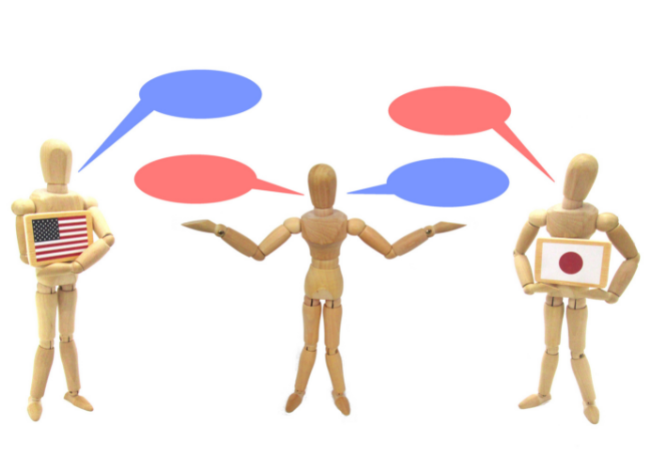Are you bilingual and wondering how to become a professional interpreter? You may already be helping out friends and family on an informal basis. If you would like to upgrade and make money from your language skills, check out this list of essential skills for professional interpreters!

What does a professional interpreter do?
Generally, translators write, and interpreters speak. A professional interpreter is a faithful messenger. We listen, and we repeat. When two or more parties do not share a common language and need to communicate, we deliver the original message from the source into the target language. If you want to become a professional interpreter, you need to learn to transmit the message without any additions, omissions, or explanations.
Professional interpreters may transmit messages from one spoken language into another, or between spoken language and sign language. The target message should sound just like the source language in tone, content, and register. This is why professional interpreters must be fluent in both languages to communicate the messages in both language directions.
Essential skills: Listening, Memory, Vocabulary Recall, Notetaking, Fluency
What are the main modes of interpreting?
There are three main modes of interpreting: consecutive, simultaneous, and sight translation:
In consecutive interpretation, the interpreter repeats each speaker’s message after they have finished speaking. It’s helpful if the speaker pauses after each sentence. But sometimes they may forget to pause, so take quick notes or intervene!
Simultaneous interpretation involves speaking or signing a message at the same time as the original speaker. Interpreters must listen, translate the message immediately and speak correctly in the target language while listening to the speaker’s next utterance. This requires training and high levels of concentration. Conference interpreters often work in pairs or teams to switch off every 15-30 minutes for long assignments because it. is. exhausting.
Sight translation involves translating a written document into a spoken language. For example, a medical interpreter may need to sight translate a consent form for a patient before they sign it. You may read the document aloud but will not produce a separate written translation.
Where do professional interpreters work?

Community interpreters can work anywhere two people speaking different languages need to communicate. You may provide services in business meetings, classrooms, press conferences, social services, consultations, interviews, presentations, legal proceedings, and many more settings!
Personally, I work most frequently in healthcare settings, but I’m also called in to assist the police. I once spent a week in a wetsuit, helping search and rescue crews train in an underwater survival simulator. I have heels for court assignments and steel-toe boots for factories. Through Remote Simultaneous Interpreting (RSI), I’ve provided interpretation for virtual trade missions and high-level meetings between Olympic organizers. As technology develops and the world becomes more interconnected, interpreters are able to work remotely via video or telephone.
Do I need special training to be a professional interpreter?
Yes.
Medical and courtroom interpreting requires specialized training, background checks, and often, accreditation or certification. Before offering professional services, you need to be familiar with and follow a professional Code of Ethics. There are specific courses to help you acquire and practice vocabulary so that your interpretation is as accurate as possible. Check for interpretation courses in your area, or sign up for a training course online.

Medical and courtroom interpreters require specialized training and often must present proof of competence or certification. The pay can vary, depending on the client, duration, and your level of experience. Interpreters may charge hourly to half-and full-day fees for court and conference assignments. With technology in an interconnected world, interpreters are able to work remotely via video link or telephone.
Can you work as a translator and interpreter?
Yes, although they require very different skillsets. Most linguists don’t do both regularly, or strongly prefer one over the other. I love translation because I am paid to read and write about all kinds of topics. I also get a special thrill out of hunting down just the right word or phrase to express the original meaning. And I love interpretation because I really enjoy helping form connections in the community. As an interpreter, I can help refugees and new immigrants communicate and receive essential information.
How can I start making money as a professional interpreter?

Whether you decide to focus first on translation or interpretation, the first step is to establish a professional profile so that clients can start finding you. Once they do, you’ll need a system to process project requests, manage your clients and assignments, and handle payments. Ready to get started?
